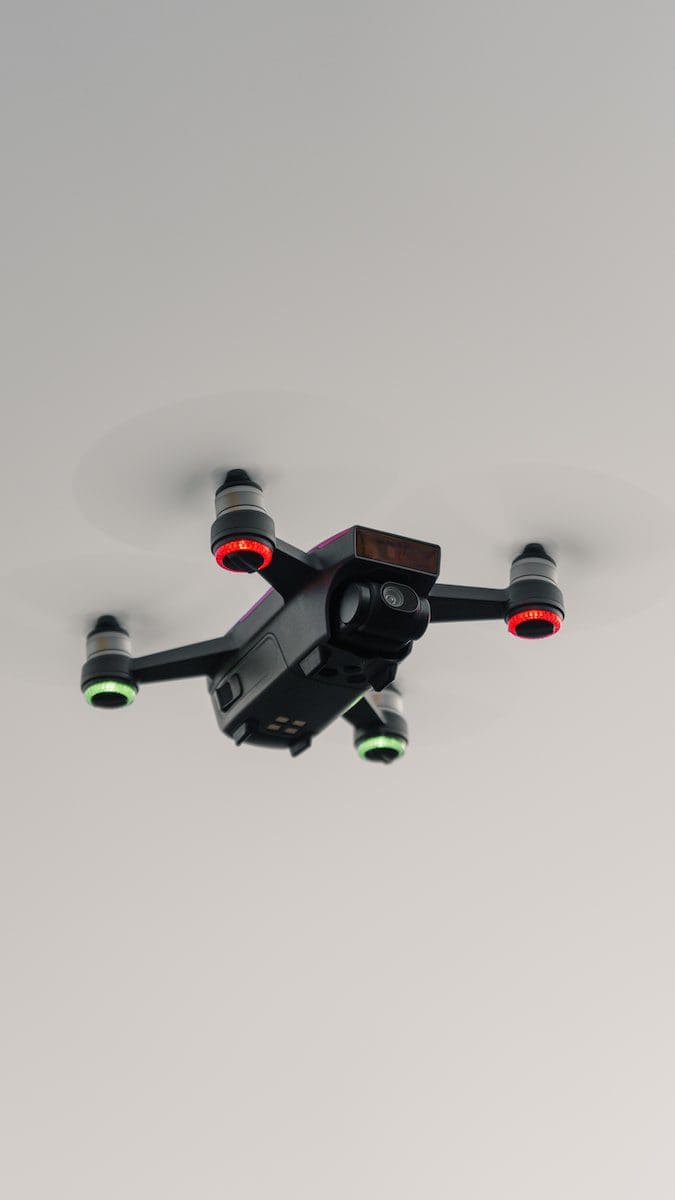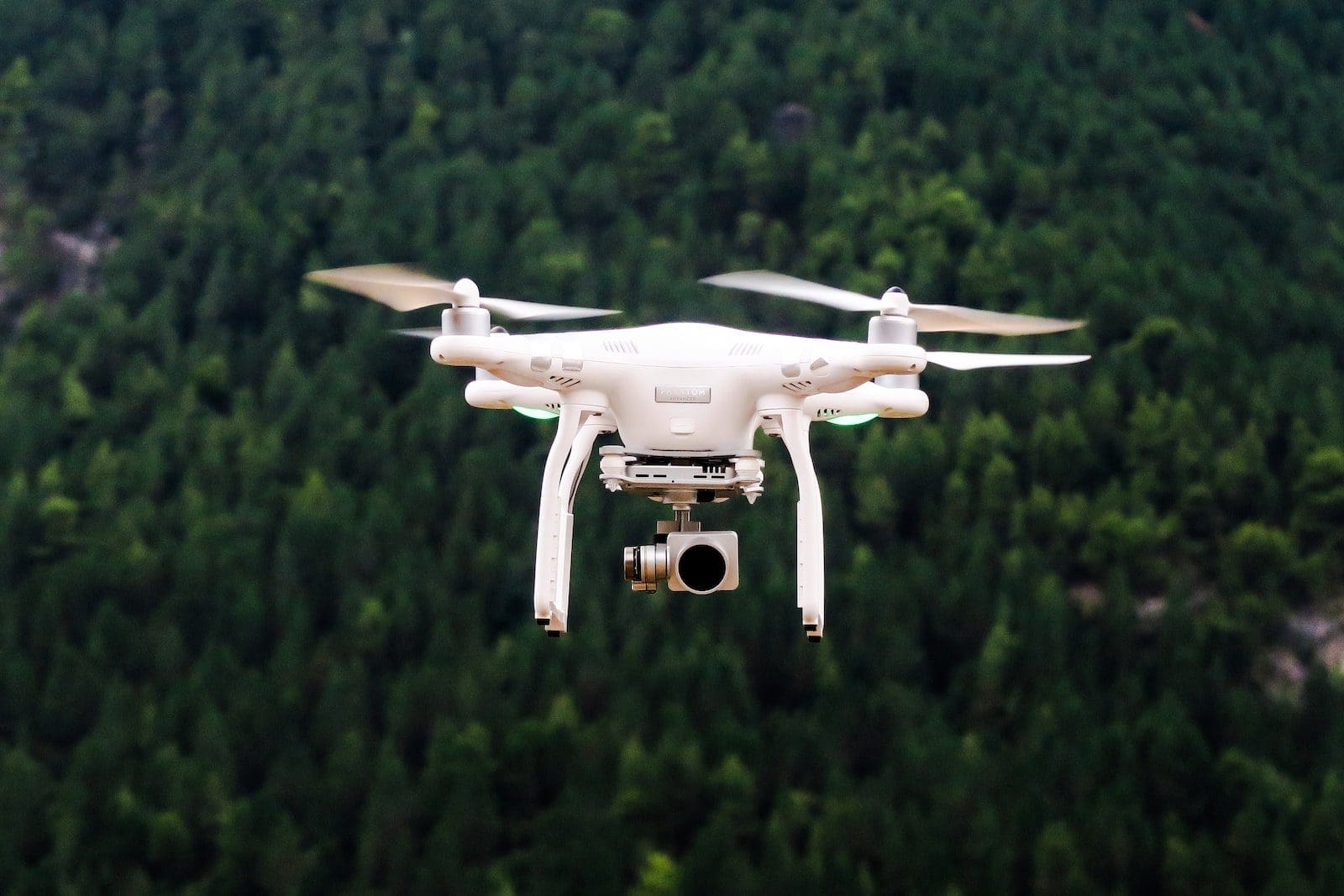On social media, terminologies like quadcopters, drones and UAVs all pop up with no explanation of what they mean.
While all of these possess similar meanings, knowing how to differentiate between them is straightforward. It makes the entire sector easier to comprehend the next time it appears on the websites or in the news.
Key Takeaways
- Drones encompass all uncrewed aerial vehicles, including quadcopters and other types of UAVs.
- UAVs are remote-controlled or autonomous aerial vehicles that can vary in size, design, and function.
- Quadcopters have four rotors for stability and maneuverability, making them popular for recreational use and aerial photography.
Drones vs UAVs vs Quadcopters
Drones are unmanned vehicles that operate without human participation.UAVs can be operated remotely by humans from the ground or by a pre-programmed system. UAVs need human engagement.Quadcopters consist of four rotors each having its own machine and are popular due to their ease of use and balance.

The term “drone” is used to describe all unmanned vehicles. The term “UAVs” refers to a subset of drones. Drones are pre-programmed to operate without the need for human intervention.
It means that no ground-based human operator is required. Generally, people, militaries, colleges, and corporations employ drones exclusively and extensively.
These are, however, now available for personal use.
Unmanned aerial vehicles are referred to as UAVs. It is, however, only relevant to all flying contingents of drones. For UAVs to survive, they need human intervention.
The remote is kept under the control of a human operator on the ground while the UAVs fly through the sky. In most cases, unmanned aerial vehicles are used in government and military activities.
They are mostly used as weapons and for scouting, exploring, and research.
Quadcopters have four rotors, making them seem like helicopters when they fly. Unmanned aerial vehicles (UAVs) can be divided into quadcopters.
Both control options are available for quadcopters. It can use human interference, allowing a human operator to control the system remotely.
Otherwise, it can be pre-programmed, similar to drones, so it doesn’t need human intervention or operation.
Comparison Table
| Parameters of Comparison | Drones | UAVs | Quadcopters |
|---|---|---|---|
| Refers to | All vehicles are unmanned. | All unmanned aerial vehicles, applicable on drones, all of the flying contingents only. | They are characterized by a four-rotor design, which makes them fly helicopters. |
| Subdivision and interconnection | Drones can be subdivided as “UAVs”. | UAVs refer to a part of Drones, and Quadcopters become a part of UAVs when it is further divided. | Quadcopters can be considered a subdivision of unmanned aerial vehicles. |
| Human interference | Pre-programmed, human interference is not required. | Requires human interference. | Two types- May require and may not require human interference. |
| Used by/for | Civilians, militaries, universities and corporations. | Context of governmental and military exercises for scouting, investigating, and research. | Real estate photography, videography, aerial photography, payload carrying, Asset Inspection, mapping and surveying. |
| Restrictions and regulations | Faces more regulations and restrictions. | Comparatively fewer restrictions than a drone. | Faces the least restrictions and regulations on its use. |
What are Drones?
The terminology used to describe drones has rushed into the press as their popularity has increased.
It is a widely used term almost used in every context and every field. It is also a vehicle with technologies to operate unmanned and aerial.
“Drone” is a term that refers to all unmanned vehicles. Drones can be further split into “UAVs.”
Drones are pre-programmed to eliminate the need for human intervention. It means that no human operator is required on the ground.
People, militaries, institutions, and corporations employ drones exclusively and extensively. However, these are now also available for purchase for personal use.
Because of its size and usage, a drone is subject to extra regulations and restrictions.

What are UAVs?
All unmanned aerial vehicles are referred to as UAVs. It is, however, solely applicable to drones and their flying contingents.
On the other hand, UAVs refer to a subset of Drones, and when that subset is further subdivided, Quadcopters become a subset of UAVs.
For UAVs to survive, they need human interference. When the UAVs are flying in the sky, the remote is controlled by a human operator on the ground. Unmanned aerial vehicles (UAVs) are commonly utilised in government and military exercises.
They’re mostly utilised for reconnaissance, investigation, and study, and they’re also used as weapons. In comparison to drones, UAVs have fewer restrictions.

What are Quadcopters?
Quadcopters have a four-rotor configuration that allows them to fly like helicopters. Unmanned aerial vehicles, or quadcopters, are a subset of unmanned aerial vehicles. Both control versions are available for quadcopters.
It can use human interference, allowing a human operator to control the system remotely. Otherwise, it can be pre-programmed, similar to drones, so that it doesn’t require any human intervention or operation from the ground.
Asset Inspection, mapping and surveying, real estate photography, videography, aerial photography, and payload carrying are just a few of the applications for quadcopters. The usage of a quadcopter is subjected to the fewest limitations and regulations.

Main Differences Between Drones, UAVs, and Quadcopters
- “Drone” refers to a term that applies to all vehicles which are unmanned. UAV refers to all unmanned aerial vehicles. However, it is applicable on drones all of the flying contingents only. On the other hand, Quadcopters are characterized by a four-rotor design, which makes them fly helicopters.
- A part of Drones can be subdivided as “UAVs”. However, UAVs refer to a part of Drones, and Quadcopters become a part of UAVs when it is further divided. On the other hand, Quadcopters can be considered a subdivision of unmanned aerial vehicles.
- Drones are pre-programmed, in which human interference is not required. It means no human operator is needed to be located on the ground. However, UAVs require human interference for their survival. When the UAVs fly in the sky, the remote is kept under the control of a human operator standing on the ground. On the other hand, Quadcopters are available in both variants of control. It can use human interference, letting the control in the hands of a human operator control remotely. Otherwise, it can also be made pre-programmed, just like drones which don’t require any human interference or operation from the ground.
- Generally, Drones are used exclusively and extensively by civilians, militaries, universities and corporations. However, nowadays, these are also available for personal needs. However, Unmanned aerial vehicles are used in the context of governmental and military exercises. They are used for scouting, investigating, research, and basically as weapons. On the other hand, some uses of Quadcopters can be cited in the fields of real estate photography, videography, aerial photography, payload carrying, Asset Inspection, mapping and surveying and many more.
- A drone faces more regulations and restrictions due to its size and use. However, UAVs face comparatively fewer restrictions than a drone. On the other hand, a Quadcopter faces the least restrictions and regulations on its use.





